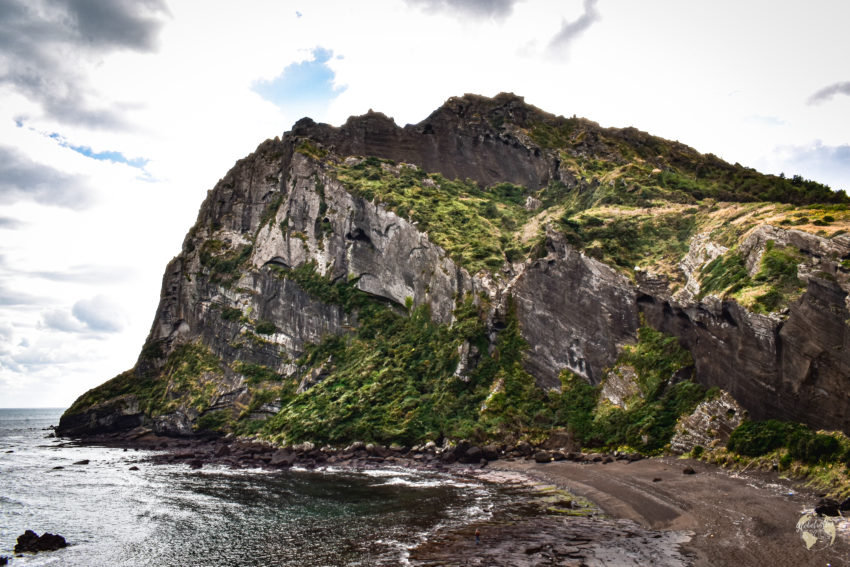The Hawaii of Korea–that’s how many people explain Jeju Island in South Korea. Black sand beaches, palm trees, magestic rock formations; there’s an endless list of things to do on Jeju Island! However, this paradise isn’t exempt from cold Korean winters. So, why would anyone want to visit Jeju Island during the winter? Read on, and I’ll share why it was one of my best decisions since being stationed in South Korea.
Jeju Island, a dormant volcano, is just an hour away by plane from mainland South Korea. Don’t worry though, this volcano hasn’t erupted since 1007, so you’re more than safe to travel here!
Its striking beauty and distance from the mainland’s congestion make it a haven for Koreans and tourists alike. Every year, people flock to Jeju to walk along pristine beaches, hike Korea’s highest peak (Mt. Hallasan) and witness the acclaimed haenyeo, or mermaid divers.
Top 5 Attractions on Jeju Island in the Winter
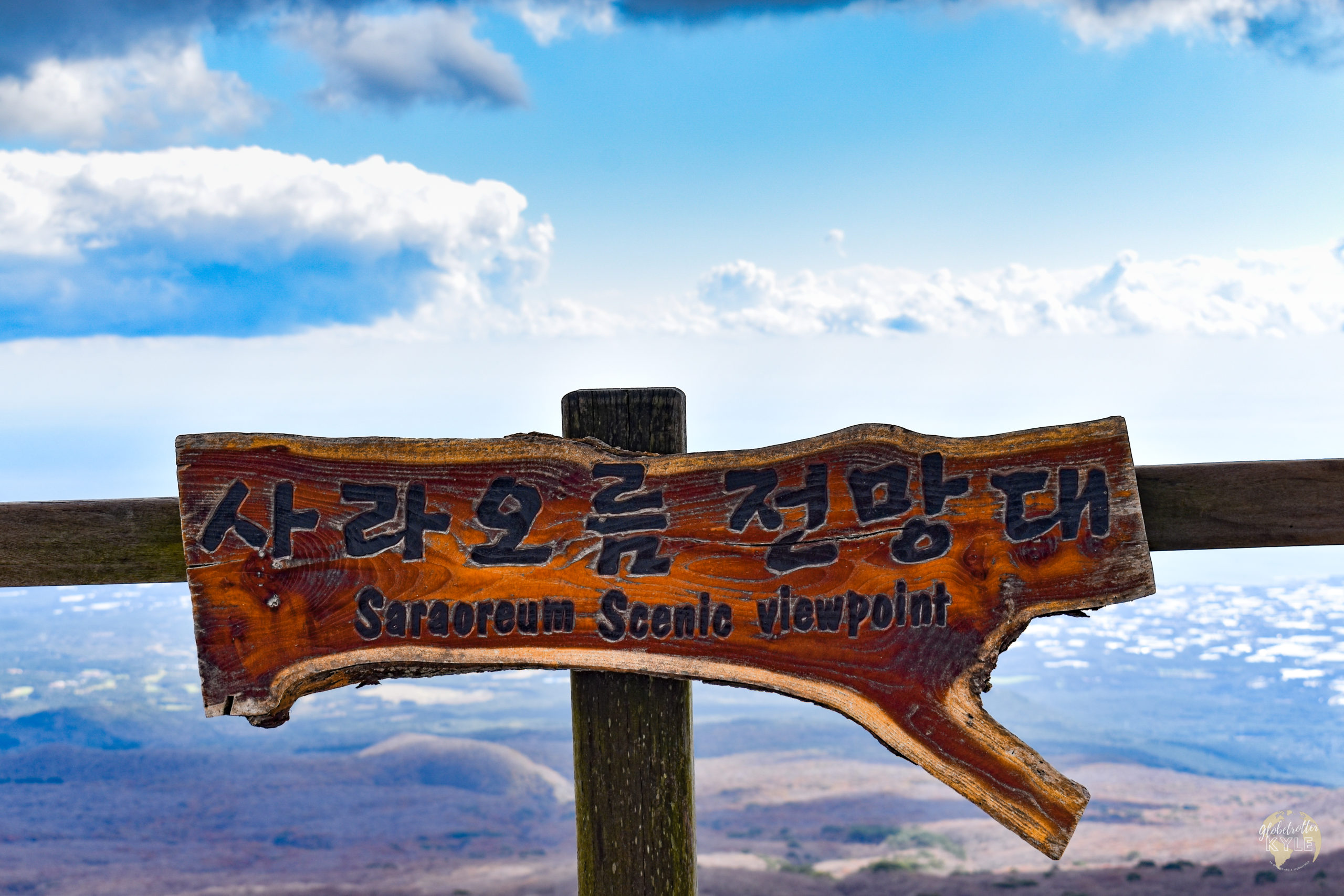
Visiting Jeju Island during the winter means less congestion and better weather than mainland South Korea. Additionally, if you’re a health nut, you’ll enjoy the fact that Korea’s cleanest air quality is found on Jeju Island, thanks to the sea breeze generated by the Kuroshio current.
However, my main intention of visitng Jeju Island was to hike Mt Hallasan, the highest point in South Korea. I made my initial attempt during a 4-day weekend in November of 2021. The plan was to hike Mt Hallasan on my first full day, then explore other random things on Jeju for the remainder of my visit.
I had my flight booked from Cheongju International Airport (only $120!), my hotel booked at Aimi Jeju Beach Hotel (thanks to my Amex points!), and my rental car booked through Tamra rental car.
Ready, set…..snow?
1. Climb Mt Hallasan
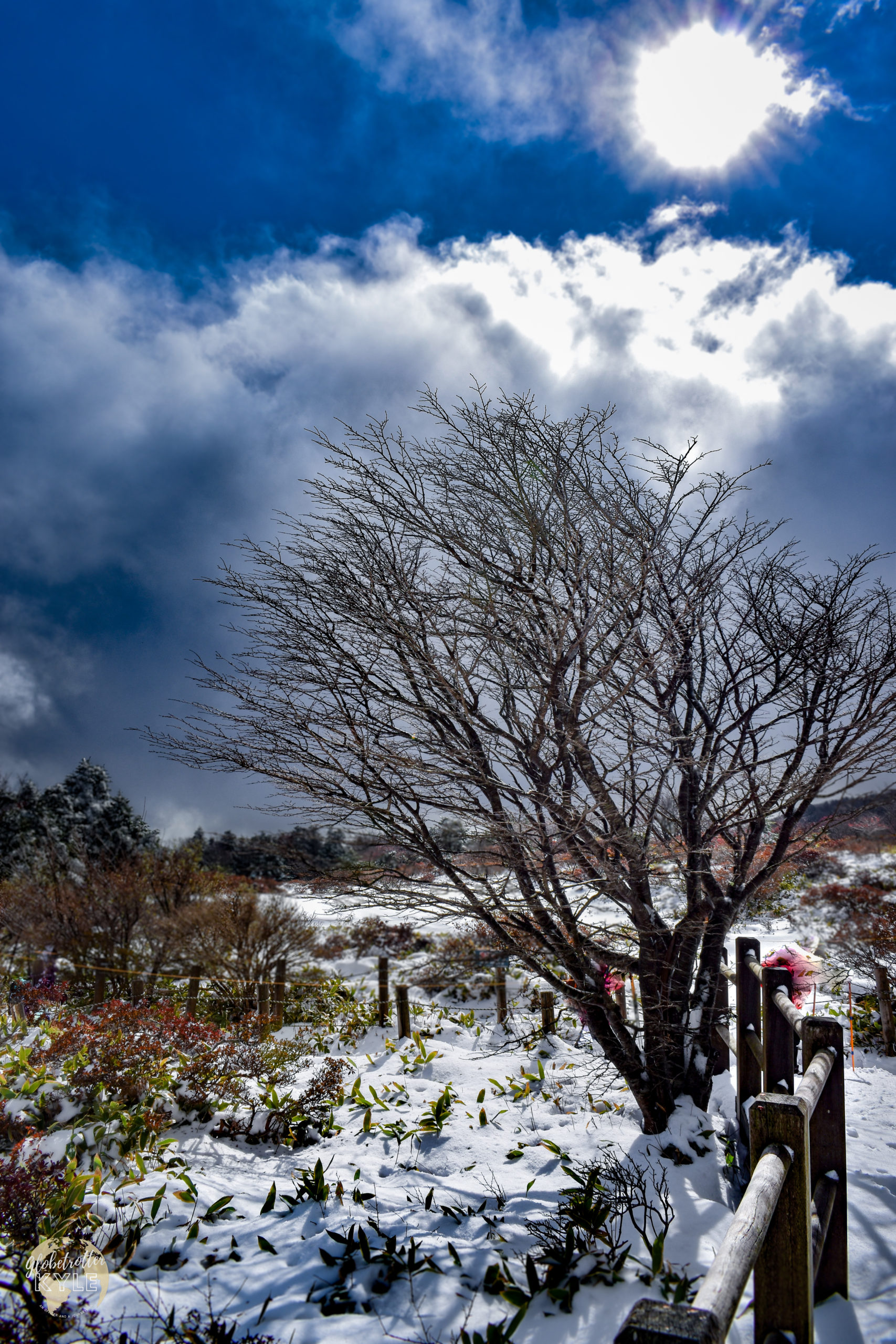
You might not think climbing Mt Hallasan on Jeju is possible during the winter, but it most definitely is! All you need is a good pair of boots, a can-do attitude, and a reservation made on their website. My winter visit to Jeju Island wasn’t that simple though.
As fate would have it, my plans changed a few days before my flight. I learned that a snowstorm was going to be hitting Mt Hallasan the night of my arrival, potentially closing down Mt Hallasan. Sure enough, the next day I received a text that my reservation to climb Mt Hallasan was cancelled due to a wicked snow storm. It was slapping the dormant volcano and causing whiteout conditions near the summit.
Nevertheless, I got up early to see what I could salvage from this adventure. Upon arriving at the trail head, the park rangers politely informed me that while the summit was closed, I could still hike to Jindalaebat shelter, about 4.5 miles from the trailhead (~9miles roundtrip). I sulked, tightened my laces, and began hiking.
I have to admit: I was pretty discouraged. Heck, I just jumped through all those hoops to get out here. However, the weather, the one thing I couldn’t control, ruined my chance at scratching this item off my Korean Bucket List. I had to remember, though, that the entire year prior had been nothing but jumping through hoops, thanks to COVID. I got pretty good at jumping through hoops you could say.
Shifting Weather on the Trial
The winter weather on Jeju Island shifted dramatically within a few hours. Nonetheless, I persevered, traversing the path towards the Jindalaebat shelter. What was a comfortable temperature at the base was quickly becoming very cold! Soon, I encountered my first few patches of snow; I couldn’t have been happier! As a Colorado Native, I love the snow, and winter is my favorite season. I thought, “well, maybe this snowstorm isn’t the worst thing.”
Four and a half miles later I reached the Jindalaebat shelter. Snow drifts had piled up along the sides of the building, and dozens of other cold souls gathered inside to eat snacks and defrost. I pulled out my cliff bars and munched on them while trying to get feeling back in my hads. After about thirty minutes, I finally felt comfortable enough to go back outside and retreat back to the trailhead. I snapped a few photos and began making my way back down.
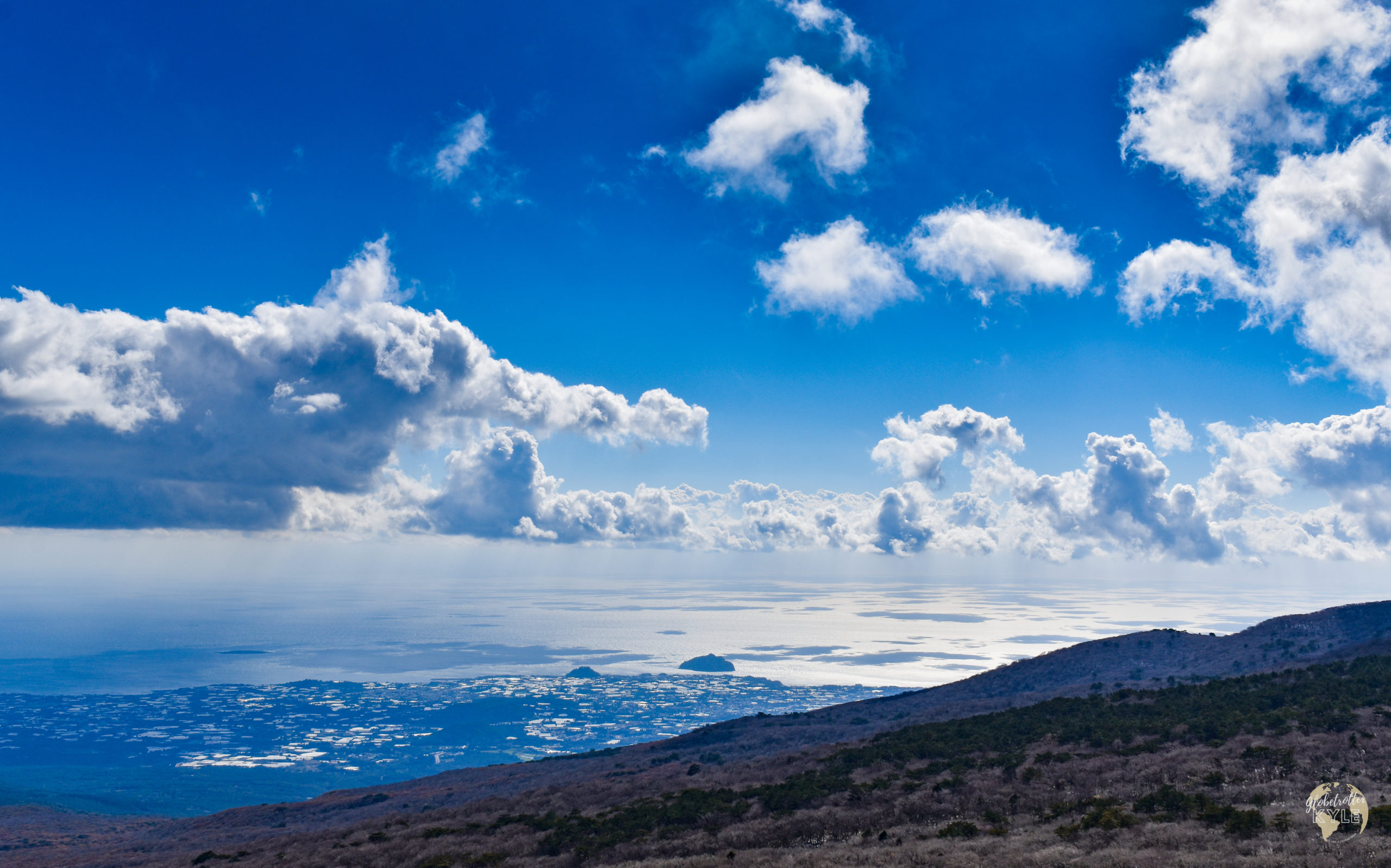
Saraoreum Scenic Viewpoint
During my descent, I took a detour to the Saraoreum Scenic Viewpoint to take some photos. The beach was some 5 or 6 kilometers away in the distance. The clouds danced upon an imaginary surface a few hundred kilometers above the surface of the sea. The shadows they left behind created the illusion of dozens of other tiny islands off the shore. The peace and harmony to the south contrasted sharply with the invasive snowstorm that had driven me and every other smart person off the mountain.
Back at the trailhead, I felt conflicted. I was somewhat content that I hiked as much as I could on Mt Hallasan, but I couldn’t stop reminiscing, “had the weather just been better, I could’ve made it to the top of South Korea”. Classic FOMO, right? I tried to shake it off but the feeling lingered; It wasn’t until the following May that I finally returned and summited Mt Hallasan, but more on that in another post.
2. Gaze upon Seongsan Ilchulbong (Sunrise Peak)
If you want to truely take advantage of Seongsan Ilchulbong, then winter is the best time for photos. This is due to the rising sun’s position in the sky over Jeju island in the winter. Because the sun rises in the lower part of the sky, it can appear the sun is rising directly over Seongsan Ilchulbong!
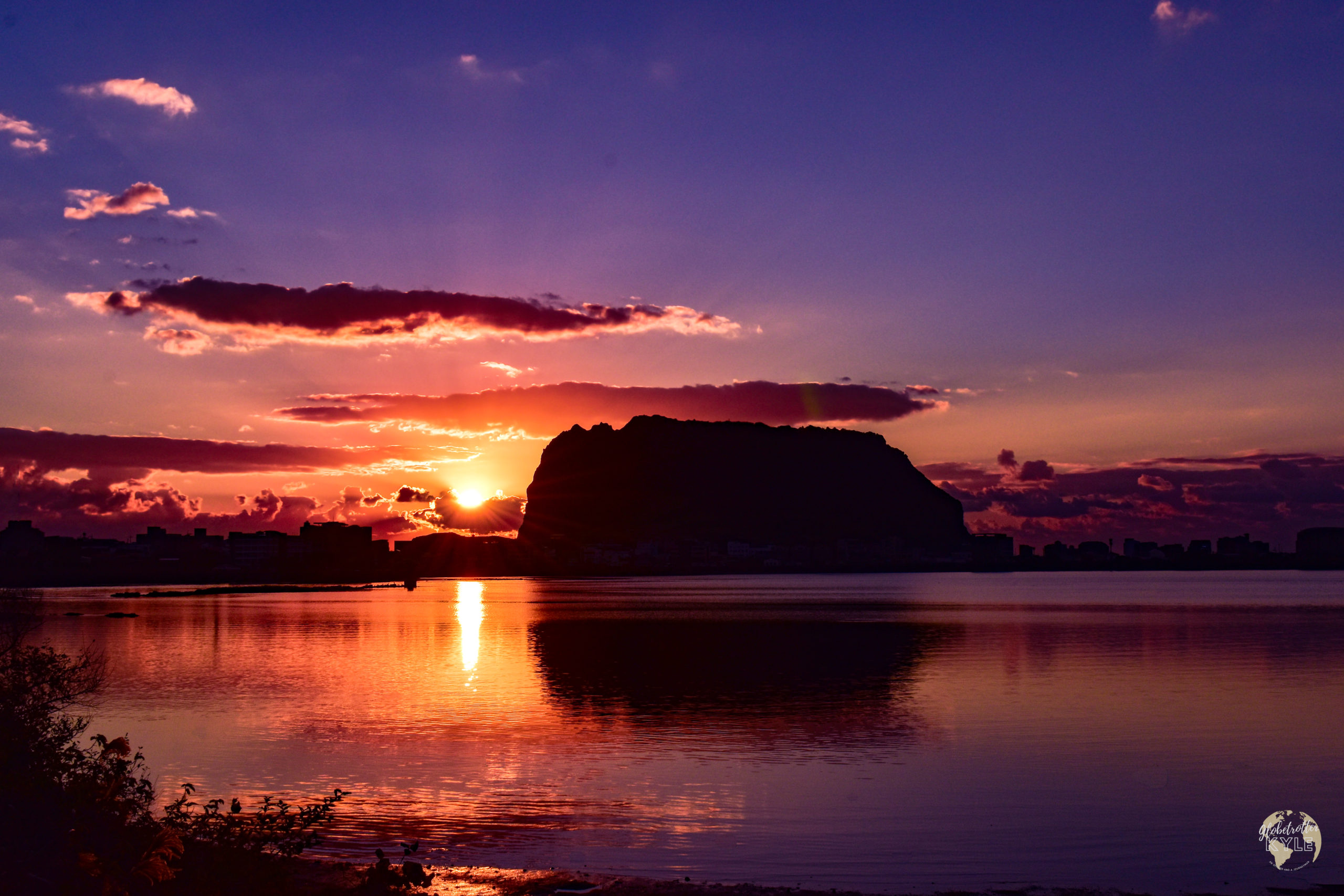
The interesting landscape of Jeju Island is, in it’s own right, something to be appreciated. There are about 360 volcanic cones scattered throughout the island, but the most impressive of them all is Seongsan Ilchulbong. This iconic attraction on Jeju is also known as Fortress Mountain in Korean (성산일출봉), and it’s definitely worth a visit during the winter.
This cone received its name appropriately as the landmass truly resembles a massive castle at first sight. When I approached Seongsan after coming off of Mt. Hallasan, I was in awe of how displaced it felt. Rather than appearing as a result of volcanic activity, it looked more like a giant meteor had struck the coast of Jeju thousands of years ago. Nothing around it was even close to as massive!
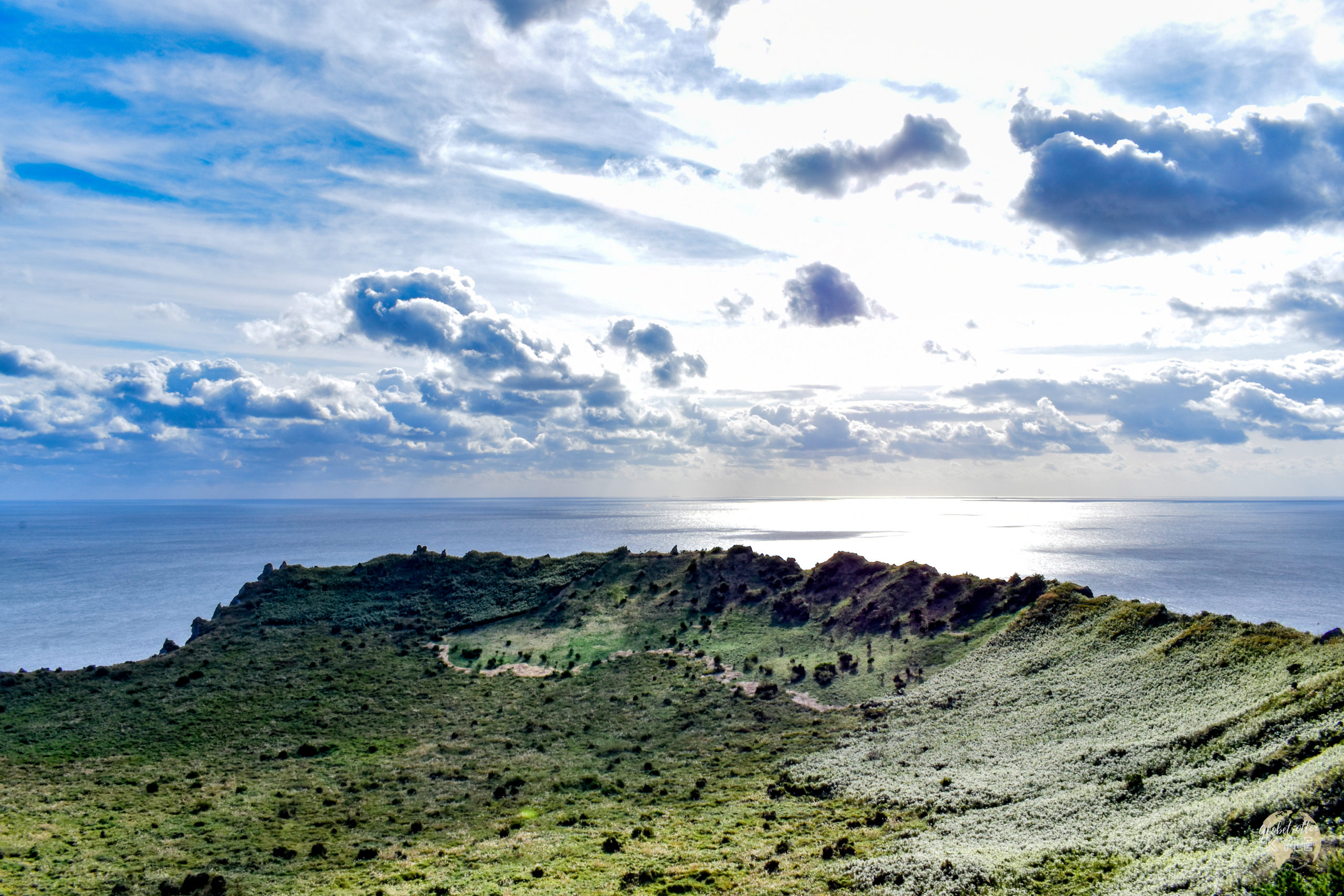
When I arrived at the parking lot, I paid a small admission fee and began the climb up a steep set of stairs to the summit. Reaching the top, I was even more amazed at the peculiarity of this landmass. The top wasn’t flat like I had anticipated rather, it was a large carter! I felt like I was living in the movie “Inception,” where physics was an illusion and creativity ruled formation.
From here, I couldn’t help but admire the vast beauty of the surroundings. In fact, it’s what led me to visit the next iconic attraction on Jeju Island in the winter…
3. Spot Jeju Women Divers (or Jeju haenyeo) and wander Seongsan Park
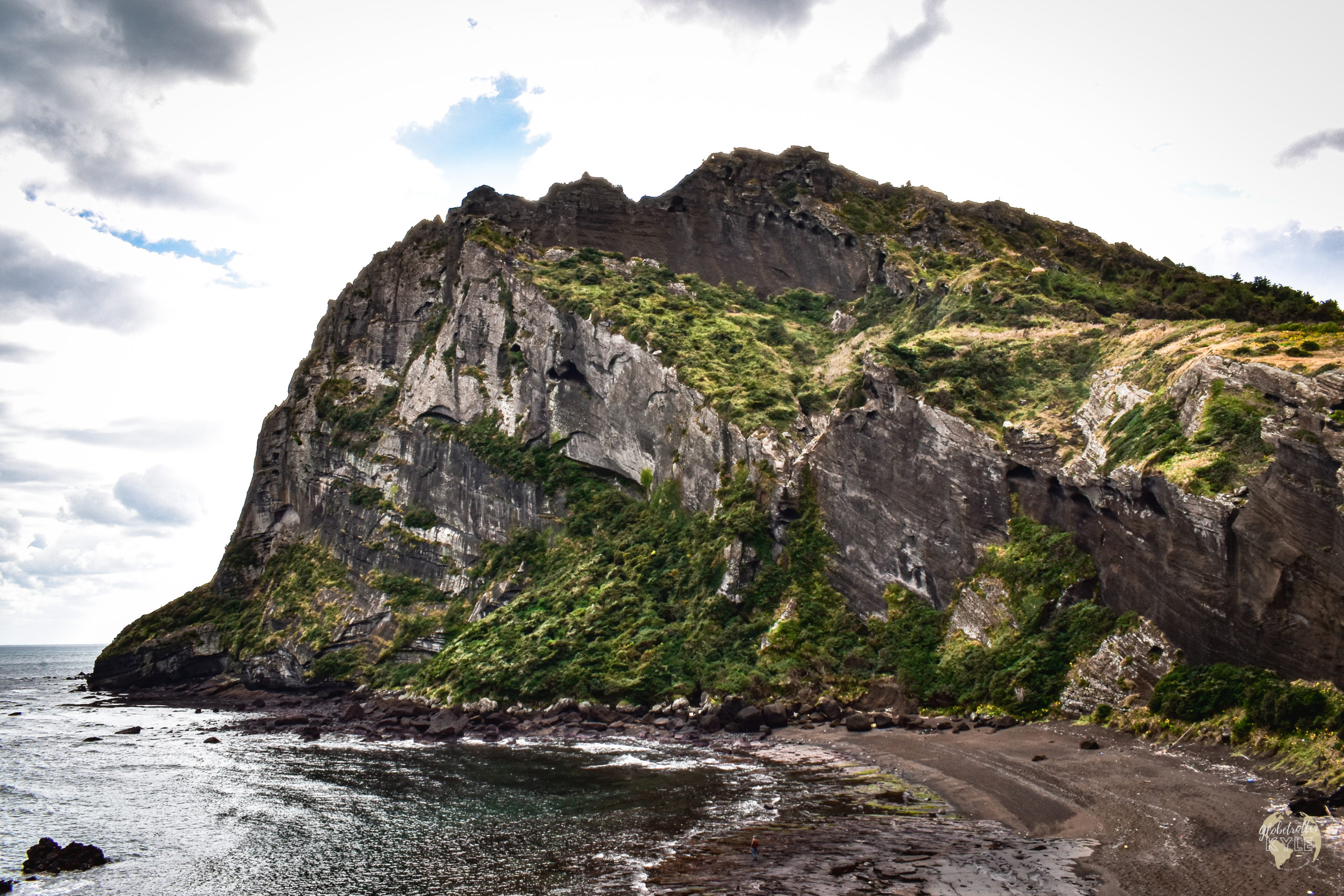
As I climbed back down the stairs from the summit of Seongsan Ilchulbong, I made my way down to the sea. The sheer, jagged cliffs that stretched up almost 200 meters were daunting and fantastic. The exposed, black stone reminded me of a time I visited Colorado’s Black Canyon of the Gunnison National Park. It was nostalgia at its finest.
Below Seongsan was a beach that, at first glance, appeared muddy and swampy. However, since everything on this island results from volcanic activity, I soon found myself walking on black sand.
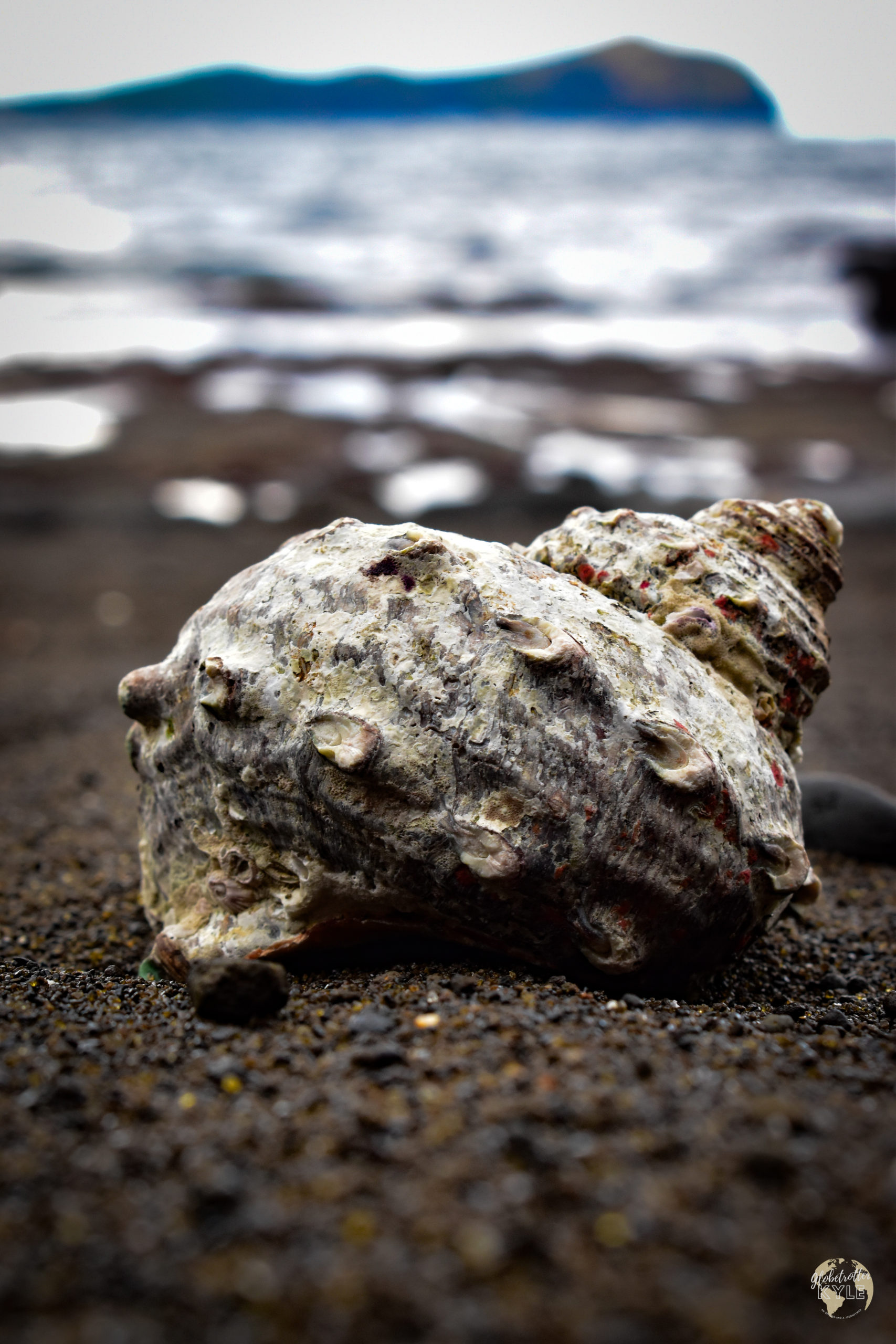
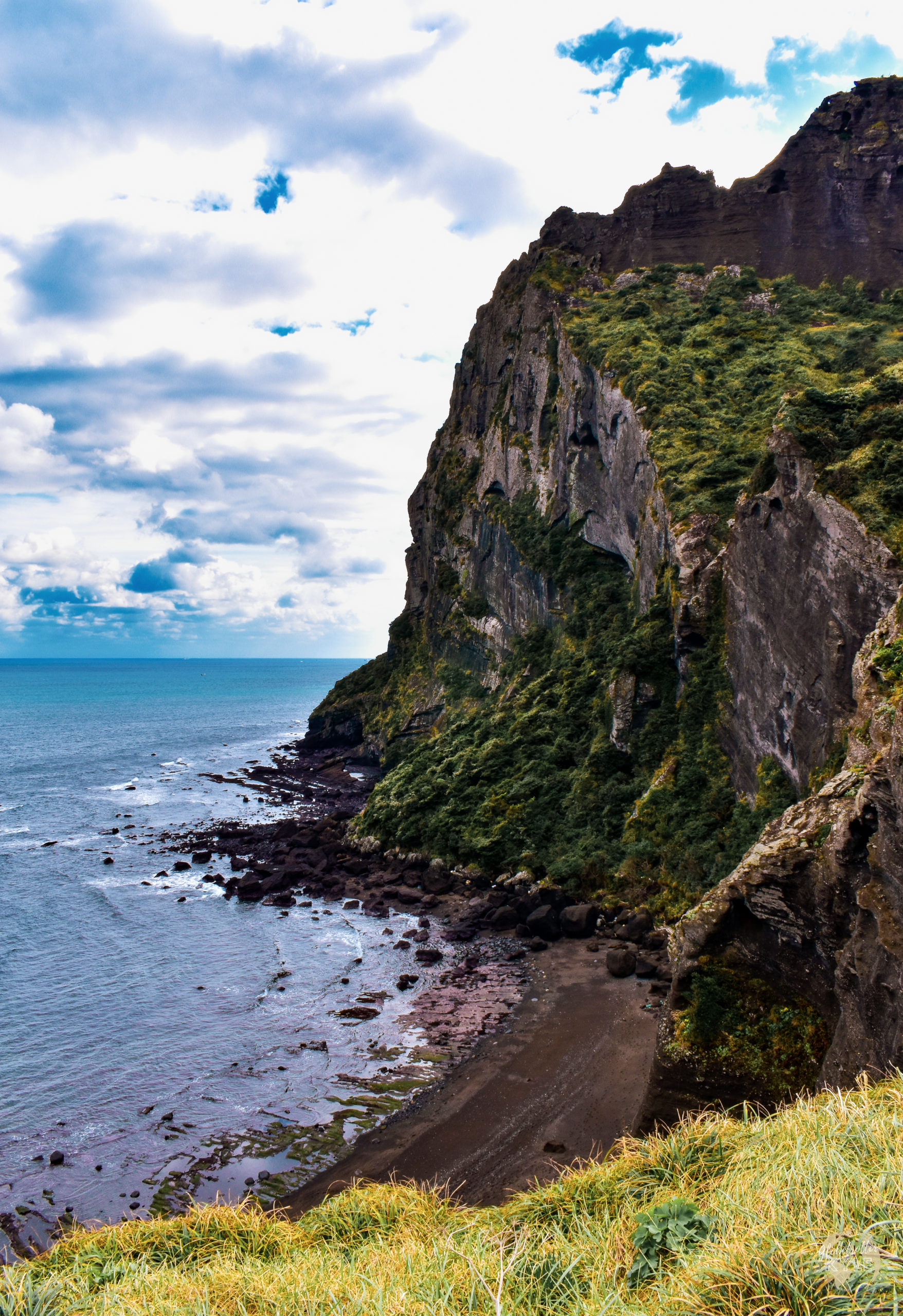
Black Sand!
I’ve always wanted to see black sand, and the coastline of Jeju Island was full of it. Naturally, I nerded out, took entirely too many photos, and let the sand sift through my fingers dozens of times. It’s not every day you get to touch black, volcanic sand, so I took full advantage of it!
If you’re visiting Sunrise Peak, make sure to witness the Jeju Women Divers—you won’t regret it! Sure, you’ve seen people don scuba gear and go into the ocean on NatGeo, but these women are badass. For seven hours a day, they dive 10 meters into the sea without any breathing apparatus to collect shellfish. You can even eat what they catch right there on the coast after hiking up Seongsan—definitely do it!
On your way down to the black sand beach below Seongsan, look to your left, and you can’t miss their headquarters!
4. Admire the Old Grandads
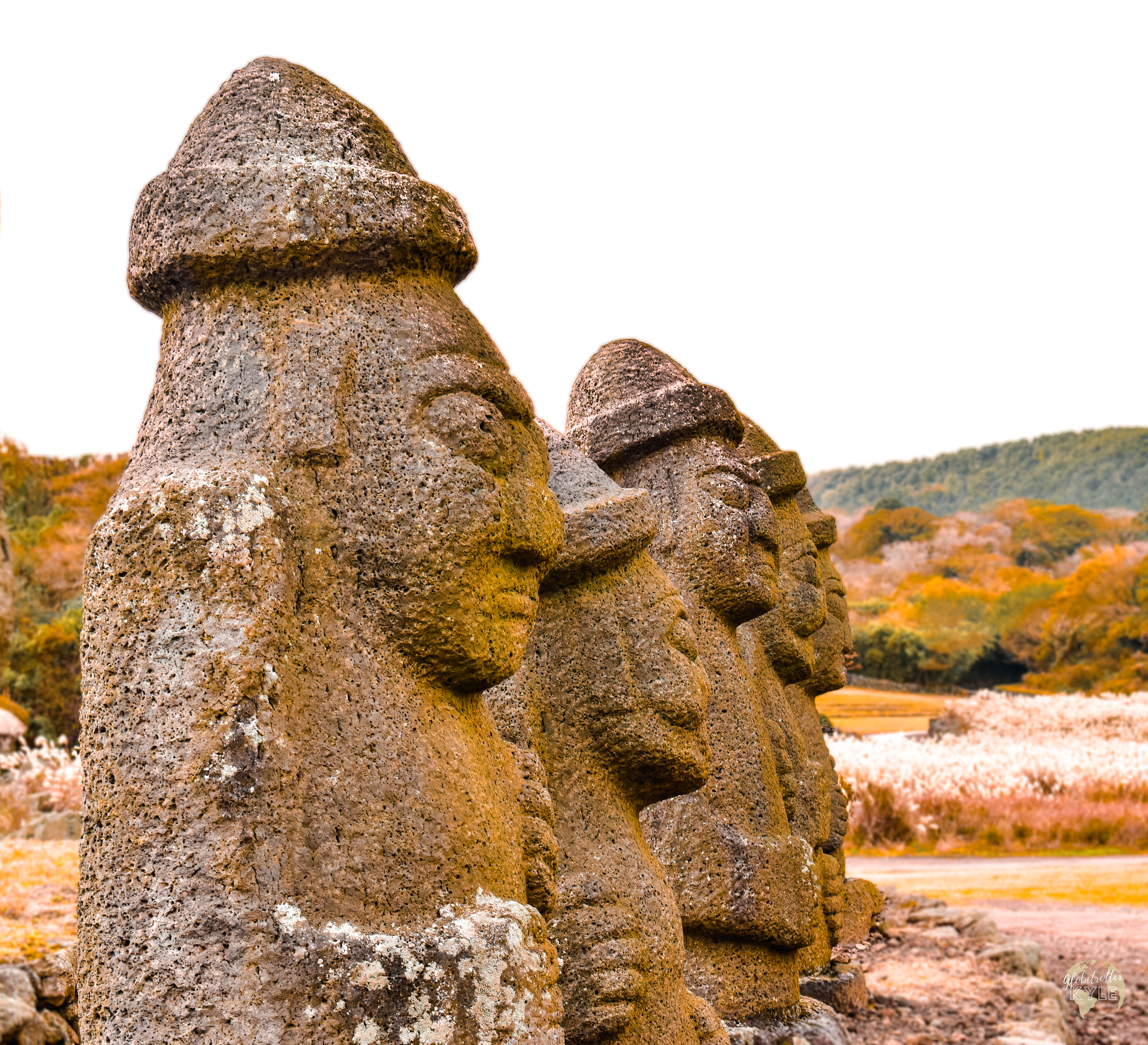
Winter in Jeju presents some incredible foilage all around the island. If you’re overtaken by all the beautiful trees, you might miss the Old Grandfathers, or Dol Hareubangs. Dol Hareubangs are the iconic stone sculptures you’ll see in every gift shop and in front of every business when you go to Jeju. There’s even an entire park dedicated to them!
On my third winter day in Jeju, I visited the Jeju Stone Park. There, I learned that the Dol Hareubang (also spelt Dolharubang) are deities placed at the sides of entrances to offer protection and prosperity. Additionally, the Jeju Stone Park has hundreds of Bangsataps, or stacked stones that appear to have a humanistic shape, believed to ward off misfortunes.

As I wandered the park, I was pleasantly surprised to find a large museum on site as well. Being that it was a little chilly (it was winter on Jeju afterall), it felt good to step inside the museum to warm up my hands and learn about the creation of the island.
The museum walked me through the geological sequences that led up to the formation of Jeju. It also showcased some of the amazing rock formations that have been found on the island due to volcanic activity.
5. Go see Epic Waterfalls!
While visiting Jeju Island during the winter, a visit to at least one waterfall is a must. I recommend the Jeongbang waterfall because you can see water flow straight into the ocean! I loved this attraction due to it’s location right near an awesome downtown area in the town of Seogwipo. This is the second largest town on Jeju, opposite end of the island from the capitol city.
The first time I tried to visit this waterfall, I got to the parking lot just as they closed the gate. I was super bummed! But, sticking to my moto of “move like water”, I opted for the path of least resistance and found myself at an amazing brewery in the town of Seogwipo. If you ever find yourself near the south end of Jeju, I highly recommend GoBrew.
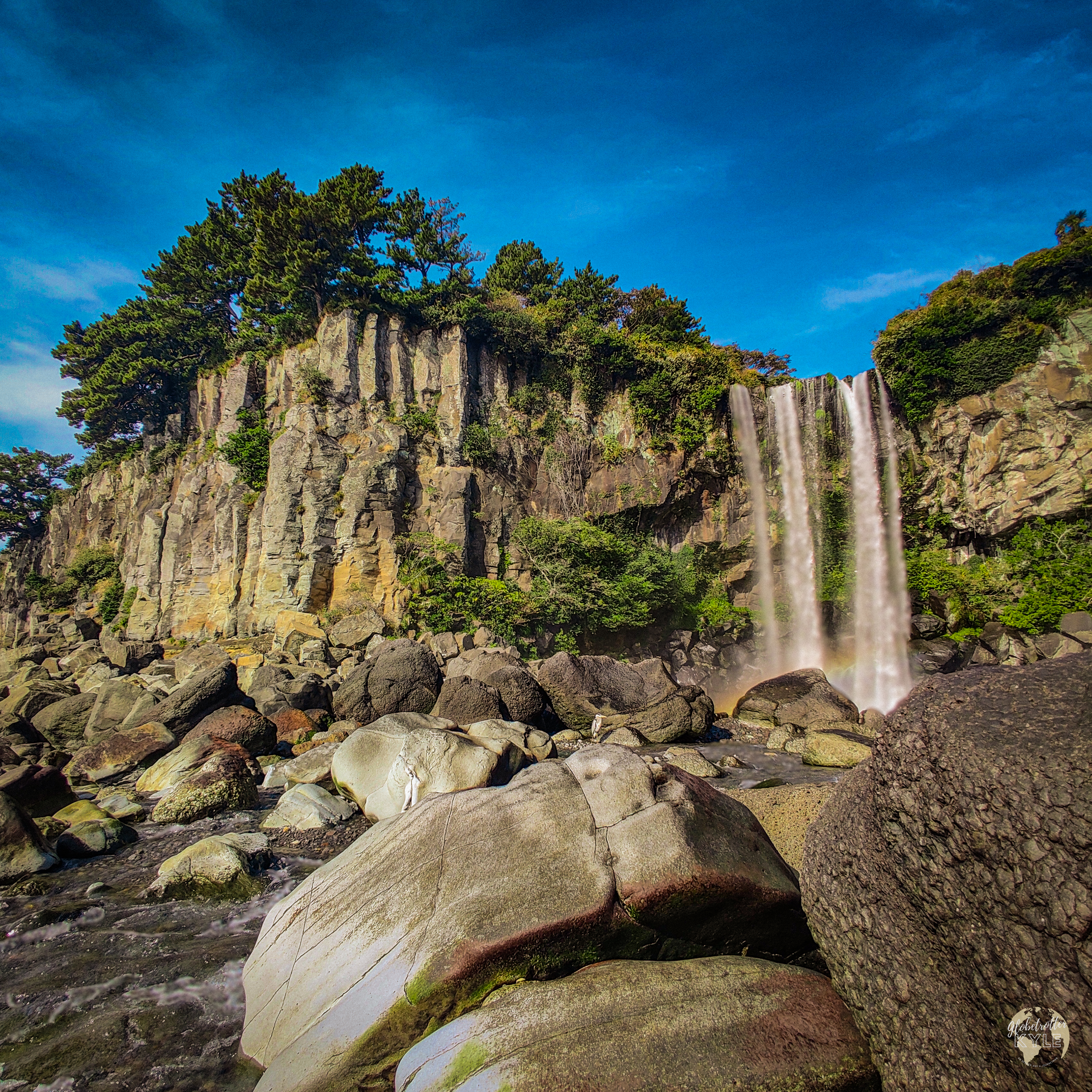
On my final day on Jeju, I made it a point to revisit Jeongbang Waterfall—I was in love at first sight. Hundreds of gallons of rushing water plunged over the rock face, smacking into a large boulder field before gently draining into the sea. Seagulls and blue herons circled overhead, looking for remnants from tourist snacks.
Remember those water cycle graphics from your high school science textbooks? They weren’t the most exciting thing to learn about, but it was pretty awesome to experience it up close and personal!
Before I knew it, my winter journey on Jeju Island was up. I drove my rental car back to the airport and headed back to mainland Korea. It was a perfect weekend in one of the most beautiful locations I was fortunate enough to visit while stationed there.
Jeju Island FAQs:
- Who owns Jeju Island? What country is Jeju Island in? Jeju Island is owned by the Republic of Korea (ROK), meaning that the island is technically in the country of South Korea. Jeju Island is about 53 miles southwest of the southern tip of the Korean peninsula.
- How was Jeju Island formed? Jeju Island was formed via underwater volcanic eruptions about 2 million years ago! The most prominent and visible remnants of this volcanic activity are the ~360 volcanic cones scattered throughout the island as well as the massive Mt Halla (aka Hallasan) which rises 1,950 meters (6,400 ft) above sea level.
- What is Jeju Island known for? So many things! To westerners, Jeju island is known for being the “Hawaii of Korea” due to the mild climate provided by the Kuroshio current. This current allows for constant, gentle sea breezes, clean air, and temperatures that rarely drop below zero. For Koreans, Jeju island is a well-known vacation destination for newlyweds, and unique theme parks for families.
- Why visit Jeju Island? Why go to Jeju? I would recommend visiting Jeju for the incredibly clean air provided by the constant sea breeze, the array of unique theme parks, the warm temperatures that rarely drop below zero, a chance to hike to the top of Mt Hallasan (the highest mountain in South Korea), and of course, to view the incredible landscapes provided by the unique formation of the island itself (volcanic cones, lava tubes, black sand beaches, etc.).
- How big is Jeju compared to Hawaii? The “Big Island” of Hawaii (i.e. the largest island in the Hawaiian island chain) is 4,028 sq mi whereas Jeju Island is only 708 sq mi–meaning Jeju Island is only ~17.5% as large as Hawaii’s “Big Island”! In other words, Hawaii is about 5.7x times larger than Jeju! To really blow your mind: the U.S’. smallest state, Rhode Island, is 1,214 sq mi in size, meaning it’s about 1.7x larger than Jeju Island.
- Is Jeju Island a volcano? Yes, Jeju Island is a volcano, but it hasn’t erupted since 1007, so you’re more than safe to travel here!
- How to get to Jeju Island? You can get to Jeju Island via ferry or airplane, both are fun! To get to Jeju via ferry, go here for more information. By plane, you can fly to Jeju from almost any airport in South Korea. I flew to Jeju from Cheongju International Airport via Jeju air for as little as $120 round trip!

